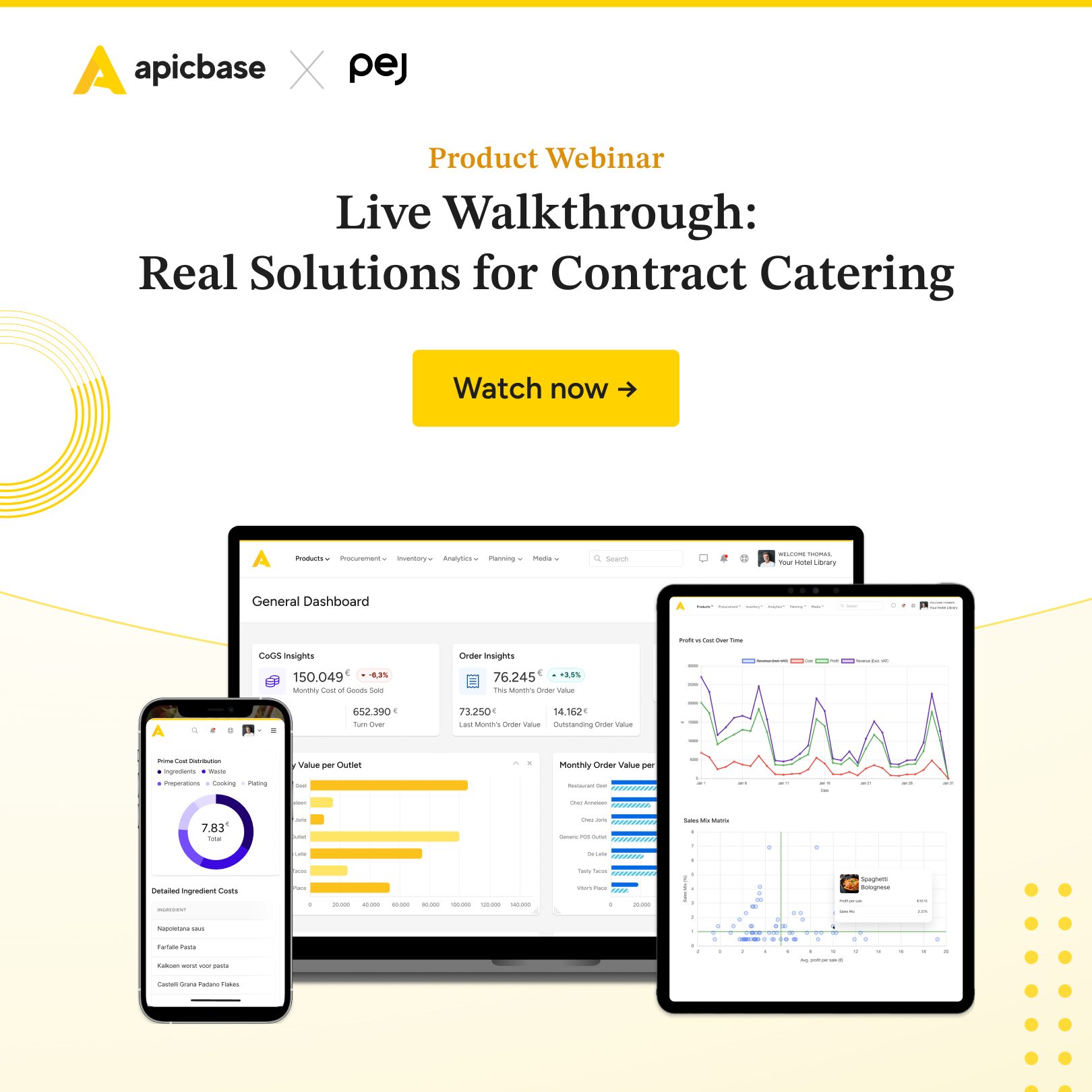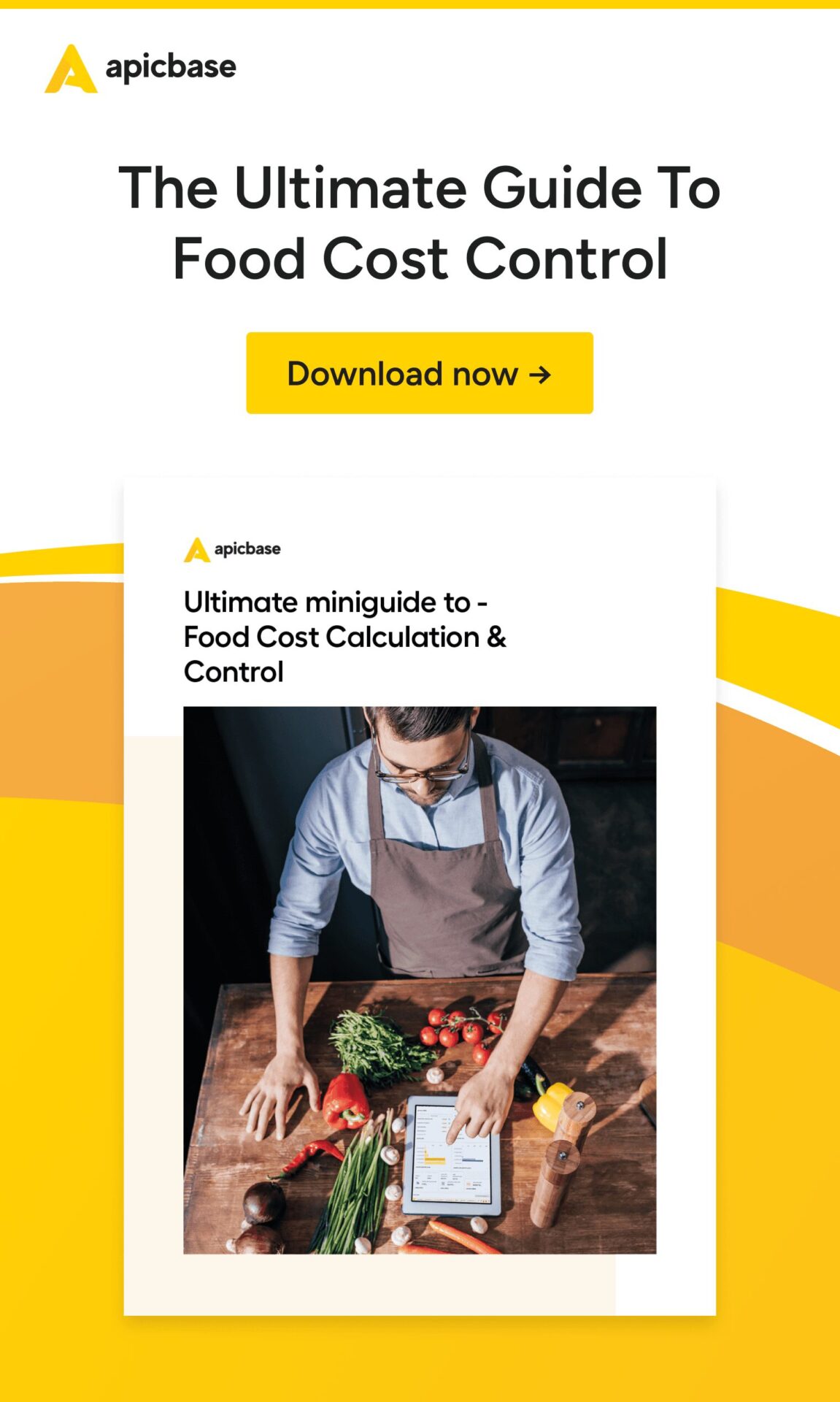Food cost control is crucial for profitability in hospitality. You need to know how to calculate food cost accurately.
If the actual food cost in your restaurant or hotel is higher than the ideal food cost (aka theoretical or target food cost), the reason for this can always be traced back to one or more of these seven causes:
- Waste or squandering
- Portion size
- Poor reception procedure
- Theft
- Unrecorded sales
- Error in the accounts
- Modified/wrong ideal food cost
The average food cost percentage in restaurants is approximately 35% of turnover. The impact of food cost on gross profit is unquestionably substantial.
By avoiding unnecessary losses on food cost, the profit increases exponentially without having to generate extra income.
What is food cost variance?
A food cost variance signifies ideal food cost is different from actual food cost. A food cost variance is expressed as a percentage from turnover in a specific period. In a perfect situation, the variance is zero.
What is theoretical food cost?
Theoretical food cost represents a restaurant’s estimated expenditure for food items based on the actual cost of ingredients used and purchased over a certain period. This does not include any potential losses due to spoilage, wastage, theft, improper portion sizing, or accounting and inventory errors. By taking all these elements into consideration as well as the theoretical food cost, restaurants can gain a more accurate understanding of how much they are actually spending on food. This provides them with invaluable insights into their budgeting and food purchasing decisions.
How to control food cost?
To control food cost you compare the actual food cost with the ideal food cost. In theory, these should be the same. Any deviation affects your gross profit.
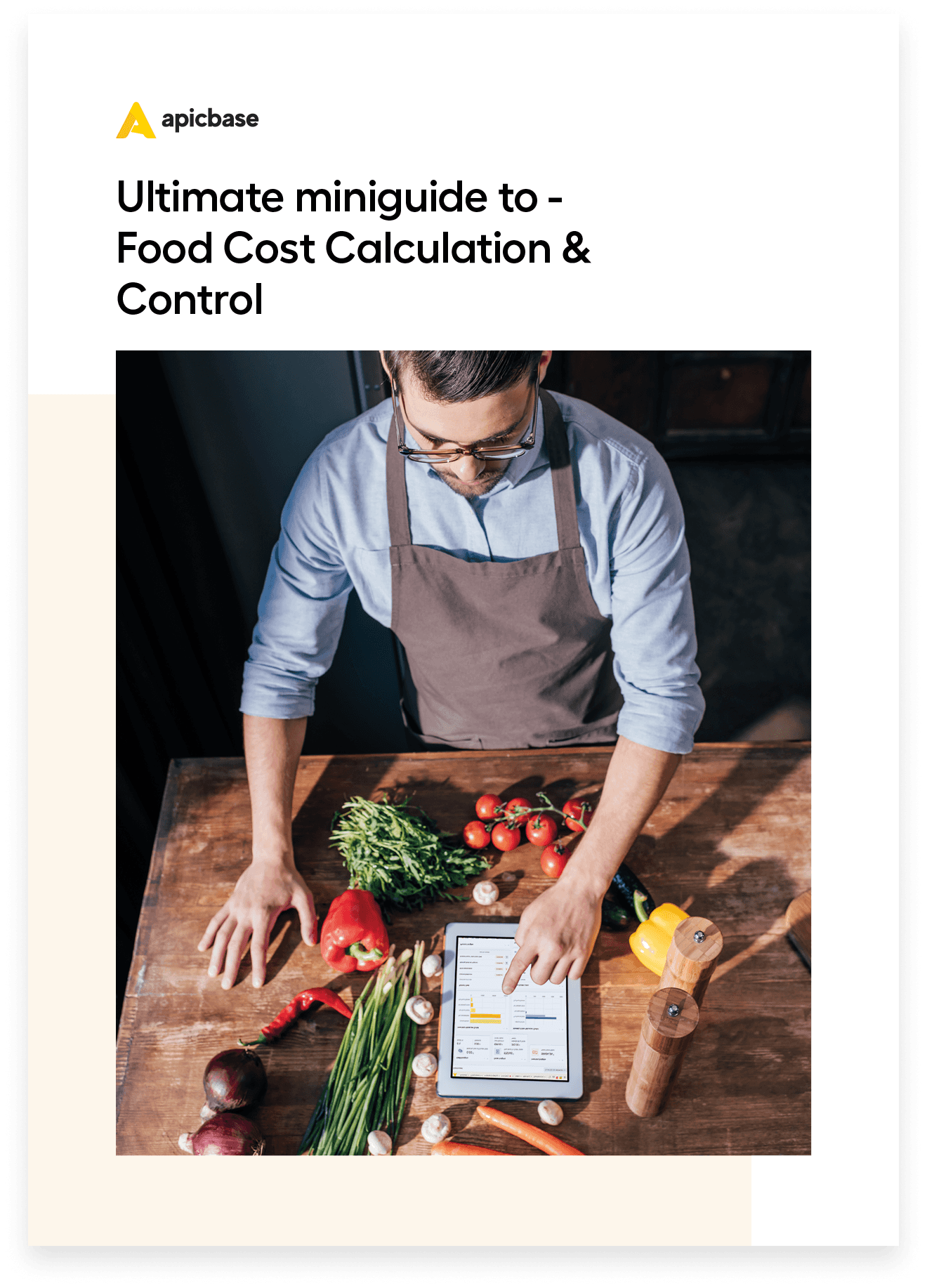
Calculate & Control the Ideal Food Cost
Discover how to calculate and control the ideal & actual food cost to develop profitable menus.
Why does a difference between actual and ideal food cost result in a loss of profit?
The next example illustrates how a food cost variance affects gross profit. Plus, it shows that simply knowing your food cost isn’t good enough, and might end up costing you a lot of money. You need to compare actual and ideal food cost to be in control of food cost.
Example:
De Beer Barn is a hospitality company with two branches, one in Brussels and one in Amsterdam, and it is asking its managers to make an overview of the food cost percentages.
This is the result:
Beer Barn Brussels:
- Actual food cost = 32.1% of turnover
- Ideal food cost = 29.5% of turnover
If you subtract the percentages from each other, you know the deviation from the actual versus the ideal food cost. In this case, the deviation is 2.6% of turnover.
Beer Barn Amsterdam
- Actual food cost = 32,8 % of turnover
- Ideal food cost = 31.9% of turnover
The difference between the actual food cost and the ideal food cost is only 0.9% of turnover.
The overall food cost in Amsterdam is higher, but the management is doing a much better job of keeping the food cost under control.
There is only a small variance of 0.9% between ideal and actual food costs.
The fact that Amsterdam spends more on food than Brussels could have many reasons, for example, if the same recipes are used, a longer supply chain.
The bigger variance between actual and theoretical food cost for Brussels can be traced back to one the seven causes below.
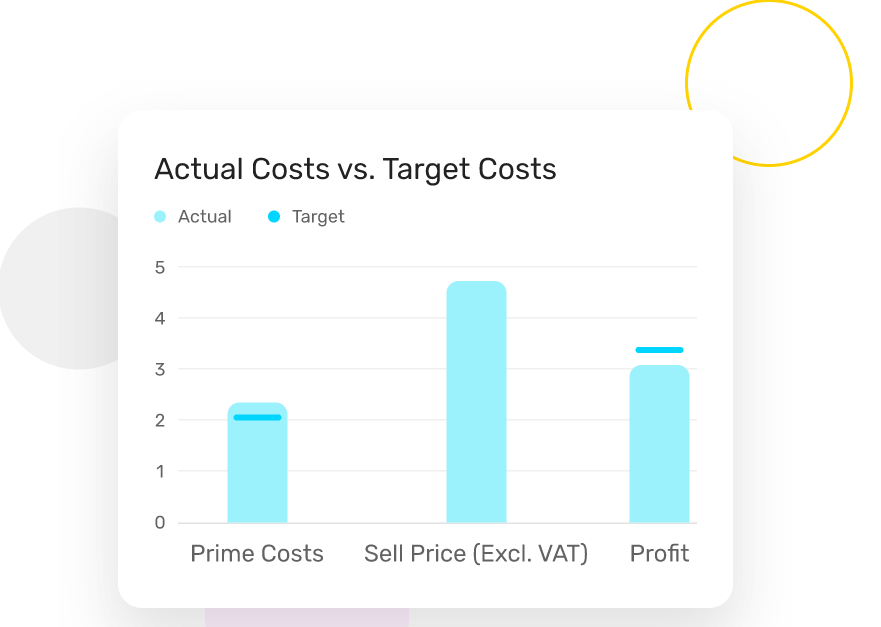
What does the difference mean for the gross profit?
Looking at the actual food costs alone, the head office mistakenly assumed Brussels is doing better than Amsterdam, while in reality Brussels is accumulating unnecessary losses.
Although the actual food cost is higher for Amsterdam than for Brussels, Amsterdam manages the food cost much better compared to Brussels.
The impact of losses due to waste, etc. is only 0.9% of the turnover, while in the Brussels branch it is 2.6%.
Impact on gross profit: if the turnover in each branch is € 1,000,000 per year, the 1.7% of unnecessary food cost for Brussels will result in a loss of income of € 17,000.
Imagine if the chain had 24 branches and that half of these losses were as high as in Brussels?
For the group, this means € 204,000 in loss of profit per year (12 x 17,000).
The example shows that it is important to know both the ideal costs and the actual costs.
Based on the actual costs, the head office could mistakenly assume that Brussels is doing better than Amsterdam, while in reality Brussels is accumulating unnecessary losses.
Without proper food cost control, the head office would never have known that its gross profit was lower than it should be.
If you don’t follow up on the food cost, you leave money on the table. Money that the competition will pick up immediately.
Food cost control is an absolute must for restaurant businesses with several branches. Due to scale any deviation of food cost percentages will have a major impact on gross profit.
When is the deviation on your food cost percentage too high?
To know whether your food cost percentage is too high, you substract the ideal food cost percentage from the actual food cost percentage. The closer to zero the result is, the better your control over food cost is.
If the difference between the ideal and actual food cost is equal to zero, your theoretical cost equals your actual consumption.
In other words, the number of portions sold multiplied by the cost per portion in a given period should be equal to the depreciation of the stock in the same period.
If the food cost percentage is not zero, it means that something somewhere is not going as it should. However, a deviation of less than 2% is generally considered acceptable.
7 causes for deviations between ideal and actual food cost
All food cost problems can be reduced to one or more of these seven causes.
1. Waste
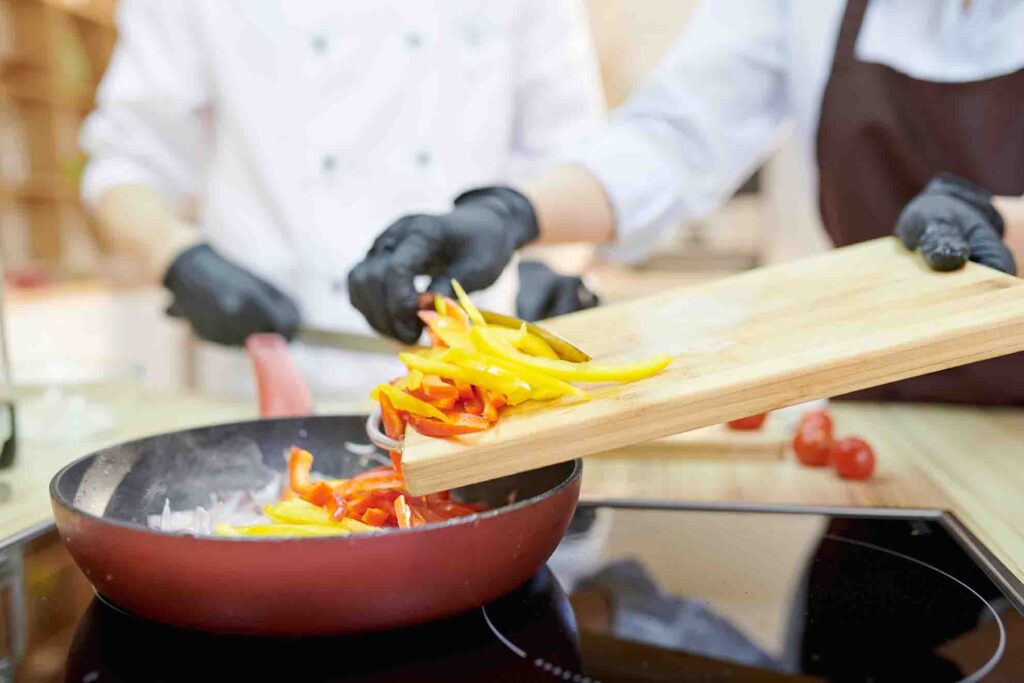
Problem: a certain amount of waste is hardly unusual. But small amounts grow big and push the gross profit down. There is always a fresh supply of goods, and before you know it, the staff loses its due diligence in dealing with food.
Fortunately, ‘Waste’ is a manageable cost.
By accurately keeping track of the value of wasted products, you discover when and why waste happens. This insight helps you to find a solution.
Solution: Use a system to register food-wasting, such as returned dishes, breakages, mistakes in the kitchen, expired products.
You can use pen and paper, but a digital system is far superior. It allows for follow up on evolutions and it will give insight into why excessive waste occurs. Apicbase offers a professional stock management module with the possibility to register wasting, on tablet, smartphone or laptop.
2. Portion Control
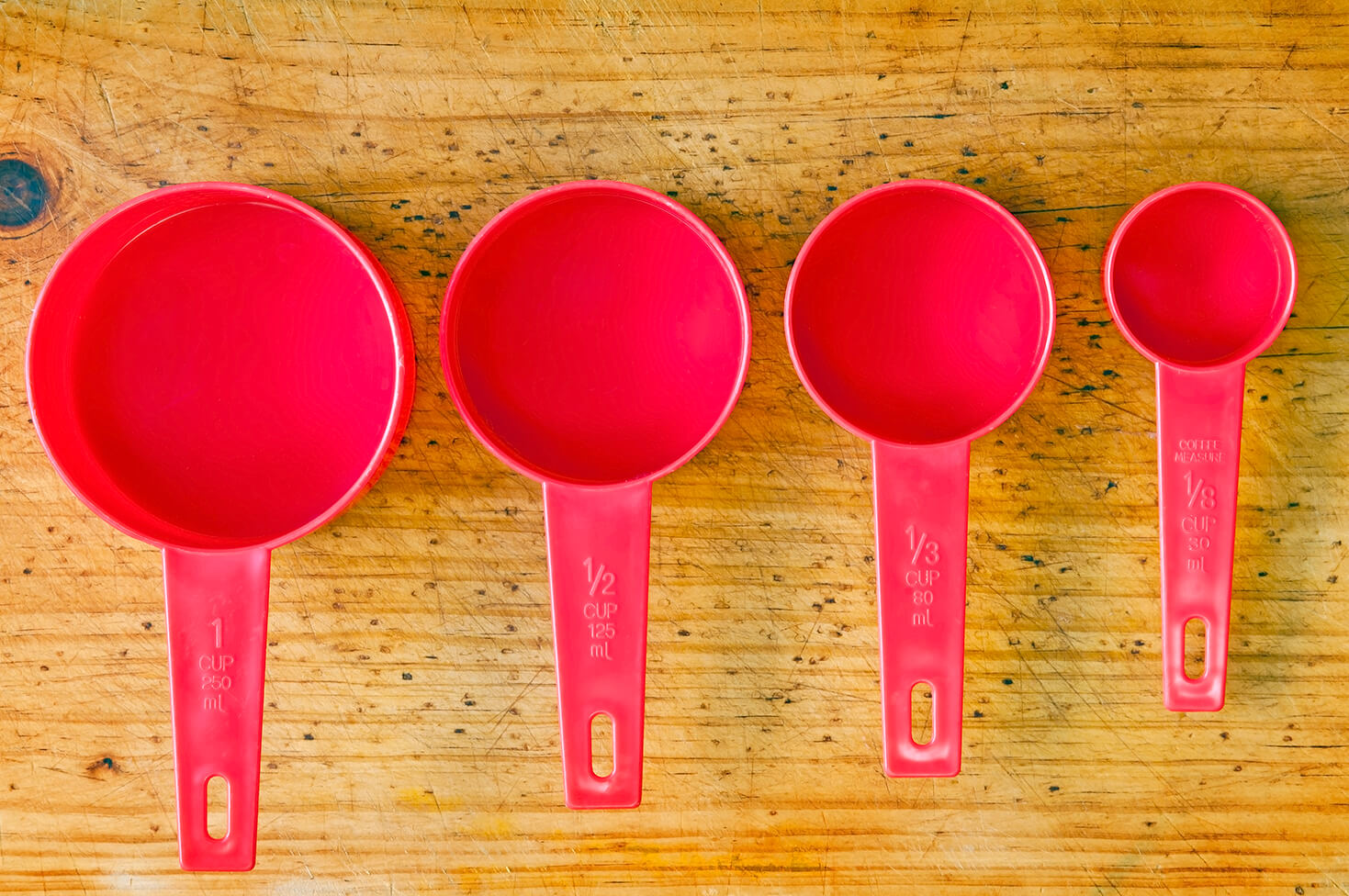
Problem: A lack of portion control is one of the main causes of food cost deviations.
Portions in a recipe are fixed. The recipe is what you use to calculate the ideal or theoretical food cost. With proper portion control, the volume of ingredients used in a finished dish is the same as in the recipe, and thus the actual cost should match the theoretical cost.
If portions vary, your actual food cost will be all over the place, and your food cost variance can never be zero.
Same goes for the preperation. If the mise en place is done on gut feeling, the food cost cannot be checked. This is dangerous, because you can never know for sure if a dish is profitable or not.
Solution: don’t rely on feeling, but follow the recipes and use measuring cups, measuring spoons and scales during preparations.
A good tip is to divide ingredients and semi-manufactured products into portions in advance. When service is in full action portion sizes are be secured.
3. Poor reception procedures
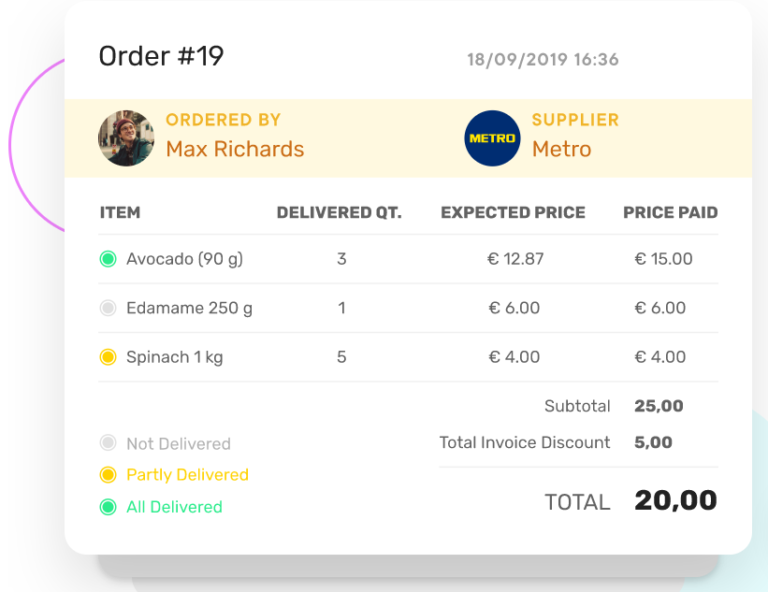
Problem: poor reception procedures lead to high costs.
Sound familiar? Your supplier puts the order in cold storage, says a quick hello in the kitchen and then leaves? Your supplier may not have any bad intentions, but mistakes with deliveries happen all the time.
If there are products missing, if the quantities are wrong, or if the wrong item was delivered, you will only find out during the mise en place, resulting in a lot of hassle and last-minute orders.
Or you don’t notice, and you pay the full amount when the invoice arrives.
This is when the food cost quickly gets out of hand.
Solution: a reception procedure prevents unnecessary loss of time and money. Always check the articles on the order form and compare them with the purchase order.
Do not only check whether everything is present, but also whether weight and price match.
Digitise the receiving of goods with Apicbase. When a delivery is made, you open the order module. This will show you the purchase order for verification. Order and delivery are linked to enable quick tracking of errors.
4. Theft

Problem: unfortunately, theft from stock happens and causes your food cost to skyrocket.
Solution: systematic stock control reduces the risk of theft. Nobody takes anything if there is a good chance that it will be noticed. And if it does happen, a digital stock management system helps to quickly detect shortages. Unnatural fluctuations can easily be detected in a graph.
Recommended Resource: 2024 Restaurant Industry Report
5. Unrecorded sales
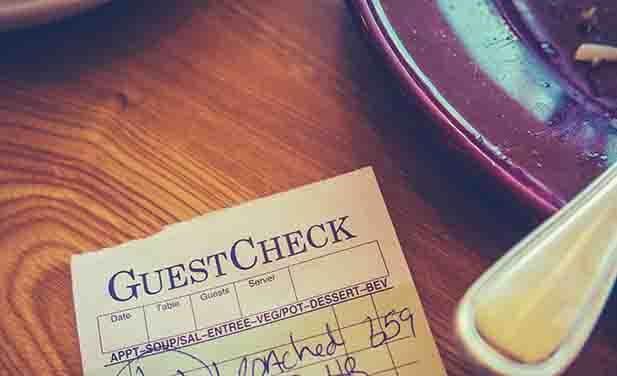
Problem: Unrecorded sales drive up food cost. These are dishes that were served, but for which the order was never entered in the cash register.
Solution: A POS system that sends the order directly to the kitchen solves this problem. The rule should be that nothing is prepared without passing through the POS.
Rule of thumb: make sure your tech can talk to each other. All systems should be able to integrate and pull or push data from and to each other.
This simple rule can reduce the food cost by 2% to 5%.
6. Error in accounting
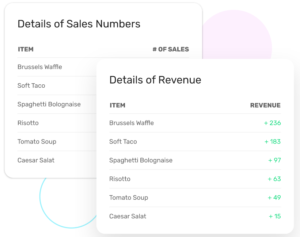
Problem: an invoice that was incorrectly booked or a forgotten stock count will cause your food cost calculation to go up.
Solution: before you start investigating the cause of a discrepancy between actual and ideal food cost, check whether the administration has been correctly followed up.
7. Changed/wrong ideal food cost
Problem: If you can’t trace the cause of the difference between theoretical and actual food cost, check the ingredient prices in your caluculations.
Solution: prices change regularly. It is possible that your cost calculation is no longer up to date. Check your prices and calculations.
By the way, since prices are constantly changing, Apicbase immediately executes every change in the list of ingredients in all food cost calculations. This way, calculations are always in line with the most recent prices.

Calculate & Control the Ideal Food Cost
Discover how to calculate and control the ideal & actual food cost to develop profitable menus.


